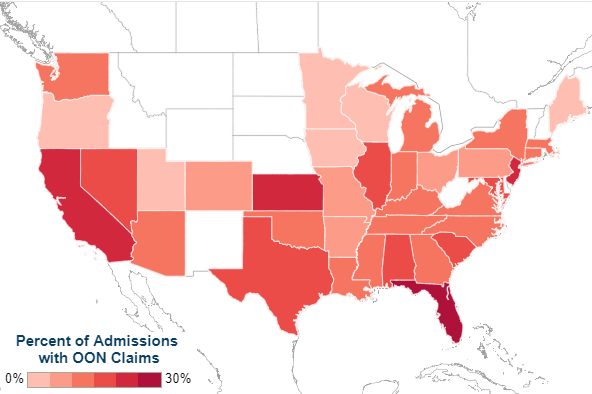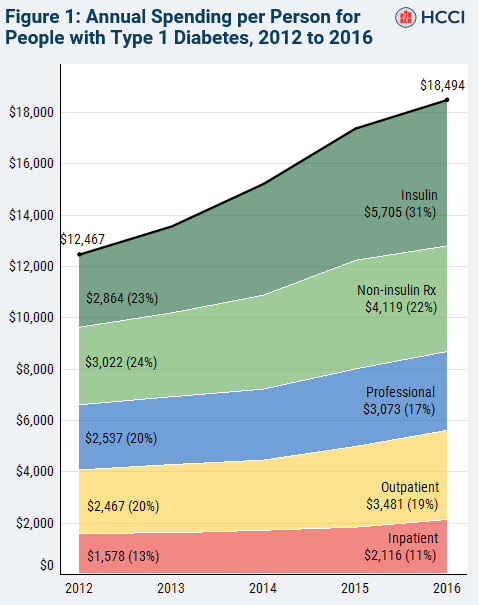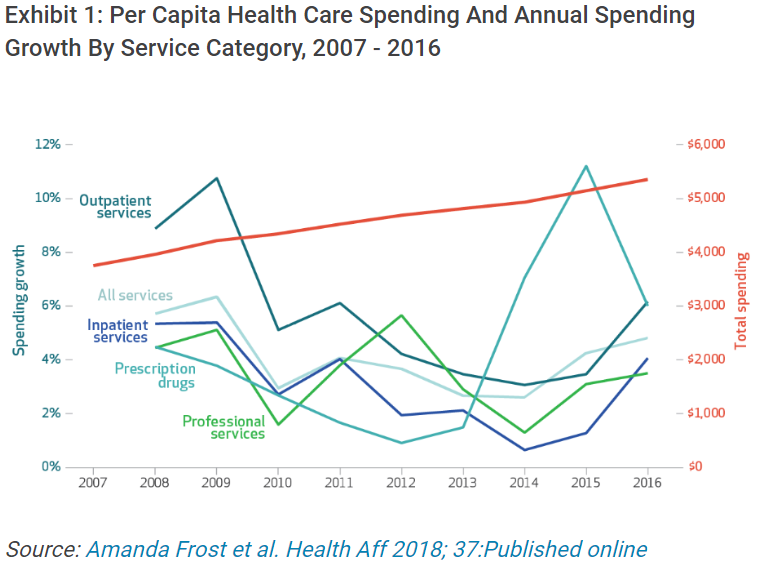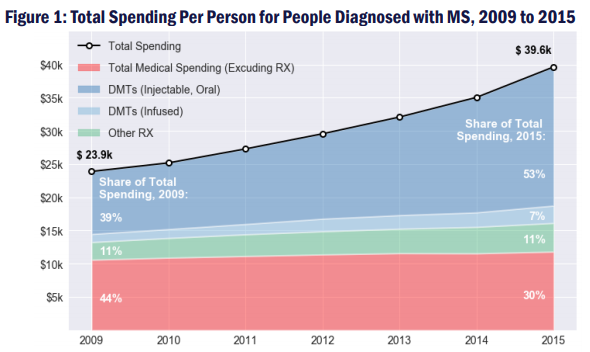Briefs
-
Shifting Care from Office to Outpatient Settings: Services are Increasingly Performed in Outpatient Settings with Higher Prices
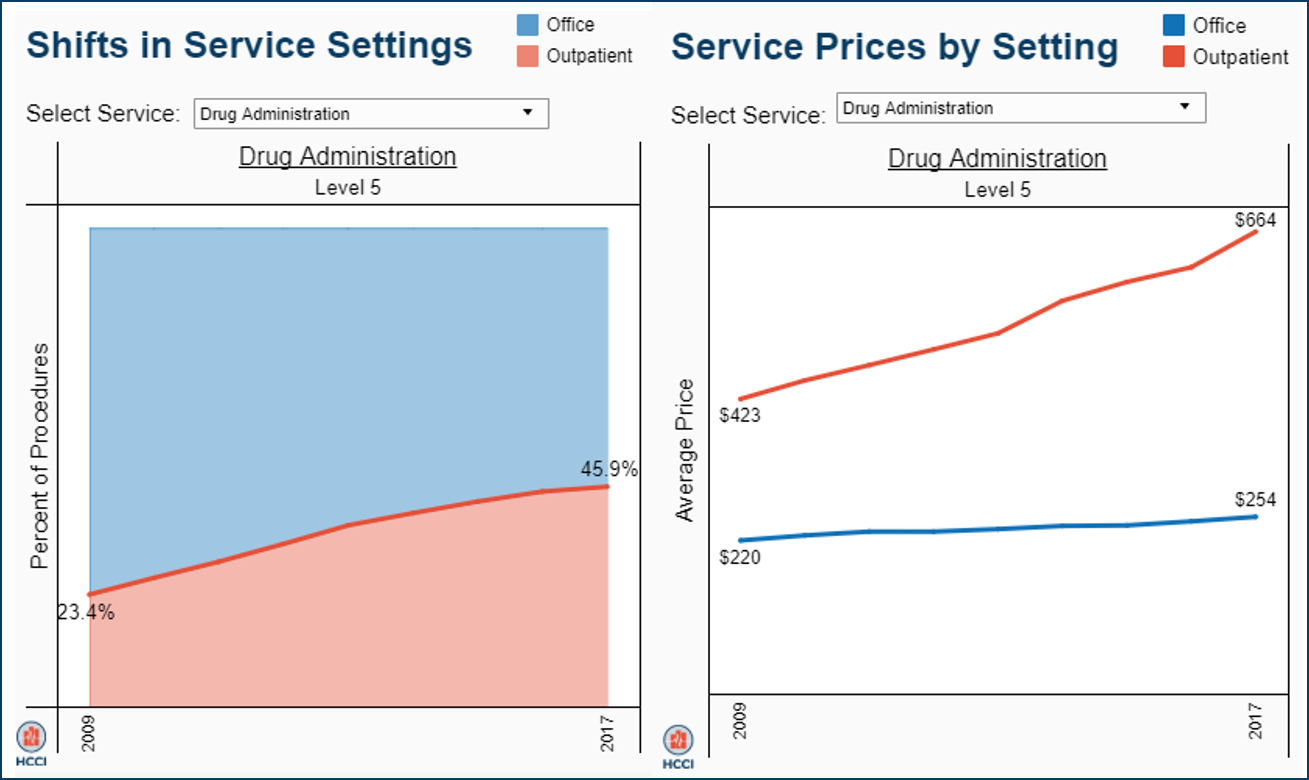 Read more: Shifting Care from Office to Outpatient Settings: Services are Increasingly Performed in Outpatient Settings with Higher Prices
Read more: Shifting Care from Office to Outpatient Settings: Services are Increasingly Performed in Outpatient Settings with Higher PricesWhere people receive health care matters, especially in terms of costs. The same services may have a much higher price tag when performed in one setting rather than another, but this price difference is rarely publicized to patients. To understand what settings people used and how prices differed, we looked at the utilization and average…
-
Surprise out-of-network medical bills during in-network hospital admissions varied by state and medical specialty, 2016
Read more: Surprise out-of-network medical bills during in-network hospital admissions varied by state and medical specialty, 2016Out-of-network billing practices have increasingly garnered attention as individuals with commercial health insurance continue to experience “surprise billing.” A surprise medical bill commonly describes a charge to a patient for care delivered by an out-of-network (OON) professional who works within an in-network facility. We used the Health Care Cost Institute’s (HCCI) vast commercial claims database to…
-
Spending on Individuals with Type 1 Diabetes and the Role of Rapidly Increasing Insulin Prices
Read more: Spending on Individuals with Type 1 Diabetes and the Role of Rapidly Increasing Insulin PricesWe used health care claims data to investigate trends in total health care spending on individuals with type 1 diabetes between 2012 and 2016. We found a rapid increase in total health care spending, driven primarily by gross spending on insulin that doubled over the period. During that time insulin use rose only modestly. While…
-
Trends In Primary Care Visits
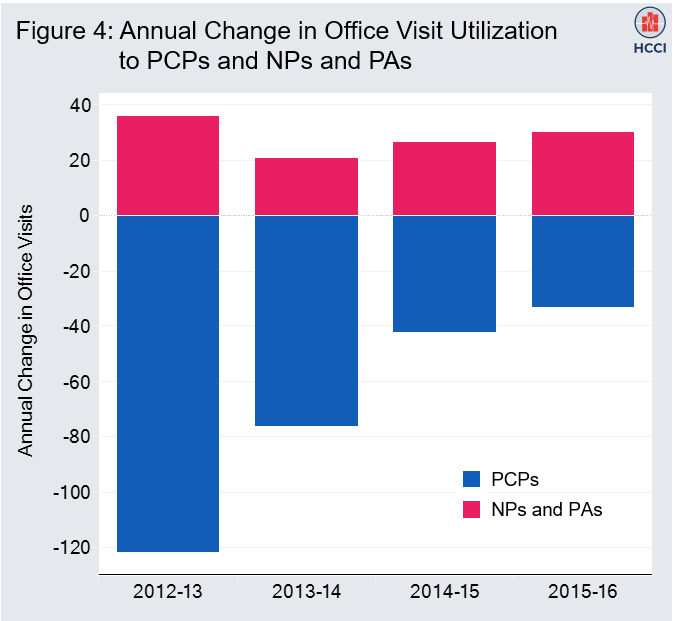 Read more: Trends In Primary Care Visits
Read more: Trends In Primary Care VisitsOffice visits to primary care physicians (PCPs) declined 18 percent from 2012 to 2016 for adults under 65 years old with employer-sponsored health insurance, while office visits to nurse practitioners (NPs) and physician assistants (PAs) increased 129 percent. Comparing 2012 to 2016, there were 273 fewer office visits per 1,000 insured individuals to primary care…
-
Understanding how price growth affected areas differently across the country
 Read more: Understanding how price growth affected areas differently across the country
Read more: Understanding how price growth affected areas differently across the countryRecently, the Health Care Cost Institute (HCCI) published its Healthy Marketplace Index (HMI) – Price Index report, examining relative health care prices in 112 different metropolitan areas. This report is the first in a new series of releases from the HMI project, funded by the Robert Wood Johnson Foundation, which compares commercial health care markets…
-
Health Affairs: Health Care Spending Under Employer-Sponsored Insurance: A 10-Year Retrospective
Tags: Commercially Insured, Drug Spending, Health Affairs, Inpatient Spending, Outpatient Spending, Peer Reviewed Journals, Physician SpendingRead more: Health Affairs: Health Care Spending Under Employer-Sponsored Insurance: A 10-Year RetrospectiveABSTRACT Using a national sample of health care claims data from the Health Care Cost Institute, we found that total spending per capita (not including premiums) on health services for enrollees in employer-sponsored insurance plans increased by 44 percent from 2007 through 2016 (average annual growth of 4.1 percent). Spending increased across all major categories…
-
ER facility prices grew in tandem with faster-growing charges from 2009-2016
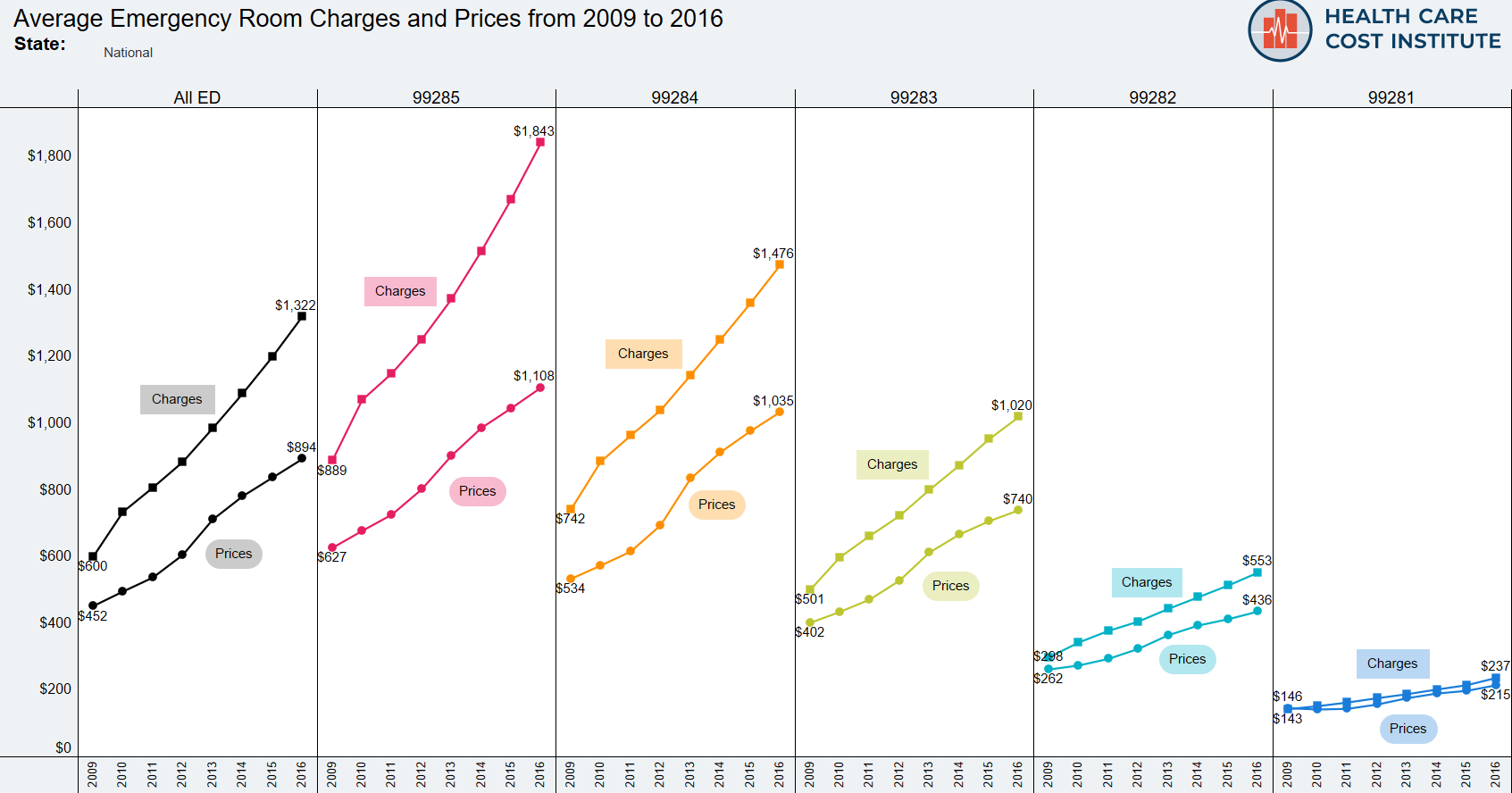 Read more: ER facility prices grew in tandem with faster-growing charges from 2009-2016
Read more: ER facility prices grew in tandem with faster-growing charges from 2009-2016HCCI often reports the prices of health care services, defined as the average amount a provider is paid for a given service based on negotiations with health care insurers. These prices typically represent a portion of charges, which are the amounts health care providers bill for the procedures they perform. The charge amount is often…
-
ER spending among the commercially insured continued to rise in 2016, driven by the price and use of high severity cases (2009-2016)
Tags: Commercially Insured, Emergency Room, Geographic Variation, Outpatient Spending, Prices, Utilization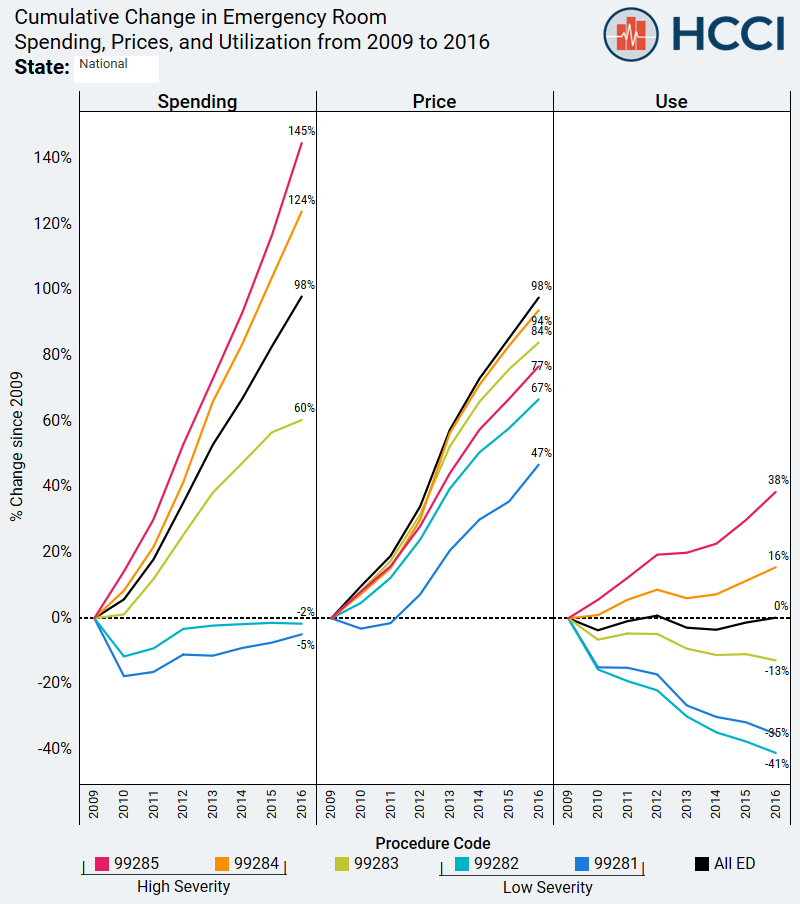 Read more: ER spending among the commercially insured continued to rise in 2016, driven by the price and use of high severity cases (2009-2016)
Read more: ER spending among the commercially insured continued to rise in 2016, driven by the price and use of high severity cases (2009-2016)HCCI recently expanded its reporting on emergency room (ER) spending trends to include the most recent data available (2016). We characterize trends in spending, price, and utilization for the five Current Procedural Terminology (CPT) codes designed to capture the level of severity and complexity of every ER visit. While average prices for all five ER…
-
Interactive Tool: Disease Modifying Therapies Drove 82% of Total Increase in Health Care Spending for People with Multiple Sclerosis
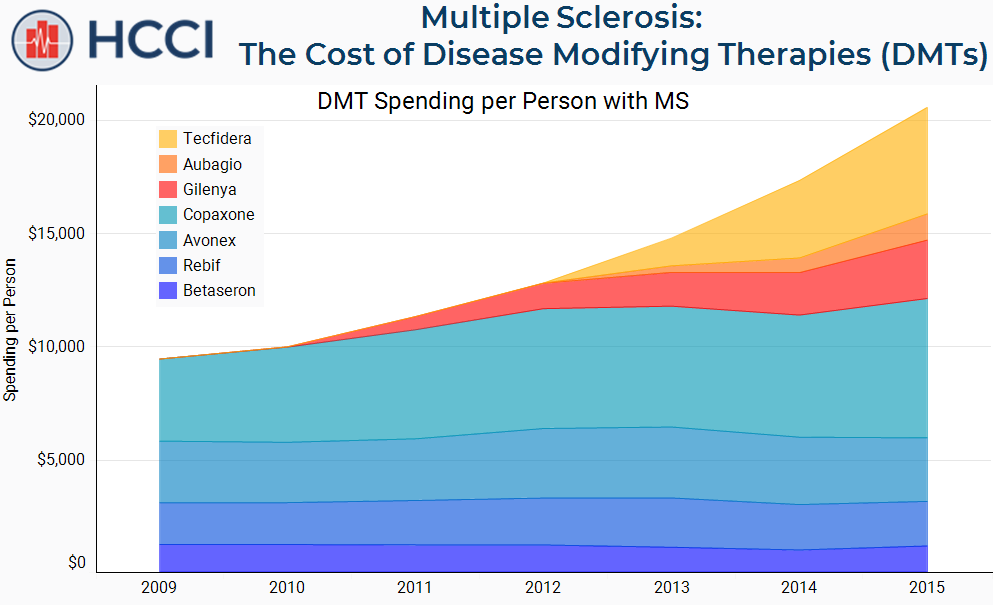 Read more: Interactive Tool: Disease Modifying Therapies Drove 82% of Total Increase in Health Care Spending for People with Multiple Sclerosis
Read more: Interactive Tool: Disease Modifying Therapies Drove 82% of Total Increase in Health Care Spending for People with Multiple SclerosisIn a recent issue brief, HCCI found that the already high cost of care for people with multiple sclerosis (MS) rose dramatically over the past several years. The primary driver was the increasing cost of a small group of prescription drugs called Disease Modifying Therapies (DMTs). To illustrate the role prescription drug prices play in…
-
The Rising Cost of Specialty Drugs Drove Spending Increases for People with Multiple Sclerosis
Read more: The Rising Cost of Specialty Drugs Drove Spending Increases for People with Multiple SclerosisThis issue brief investigates how the cost of prescription drugs affects the total cost of care for people with multiple sclerosis (MS). It decomposes total health care spending by category, specifically separating out spending on specialty drugs used to treat MS, called Disease Modifying Therapies (DMTs). The issue brief subsequently examines whether changes in spending…

